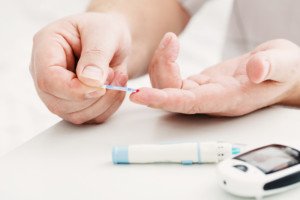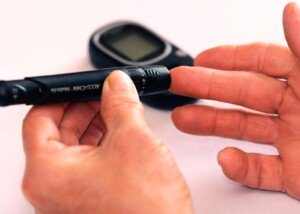
A blood sugar in the 300’s is dangerously high, and all diabetics need to recognize when it’s time to rush to the emergency room when their glucose levels soar into an unacceptable range.
“Normal non-fasting (eaten within eight hours) blood sugars are acceptable below 150, preferably 80-120,” says Yvette McQueen, MD, emergency medicine physician and CEO of MedQueen LLC, through which she offers travel medicine, urgent care and nutritional consultations via telemedicine to individuals, executives and travel groups.
“Long-time diabetes or hard to control diabetes may have blood sugars in the 300’s,” continues Dr. McQueen.
“They will manage it at home with medications, and the blood sugar will reduce.”
When a Blood Sugar in the 300’s Means a Trip to the ER
Dr. McQueen explains that when “blood sugars are in the 300’s and they have symptoms (nausea, vomiting, persistent diarrhea, chest pain, difficulty breathing, dizziness, confusion, drowsiness), they should definitely come to the emergency department.”
Two Types of Diabetes
Type 1. The pancreas does not produce, or does not produce enough, of the hormone insulin.
Type 2. The pancreas secretes enough insulin, but the insulin receptor sites on cells are impaired.

Shutterstock/Maya Kruchankova
“Type 1 diabetics can easily bring their blood sugars down with insulin,” says Dr. McQueen.
“So people who have hard to control sugars will wear an insulin pump that steadily gives the body insulin.
“Type 2 diabetics’ glucose can be reduced by pills or insulin injections; usually the glucose input (food) into their body will cause it to spike.” Exercise as well will bring down the glucose.
“The concern for high blood sugars is the body’s reactions,” continues Dr. McQueen.
“The body is a fine-tuned machine and likes to have levels steady.
If sugar is high, the body produces ketones and lactic acid which throws off the acid-base (pH) level of the body.”
Blood Sugar Crisis
With the acid-base level thrown off, the body will become too acidic, affecting breathing, the kidneys and the brain.
Breathing will be increased, and there will be less oxygen entering the lungs.
Kidney function will suffer (acute kidney failure), leading to dehydration, leading to higher blood sugar yet.
The brain gets affected because the kidneys are not able to do their job, which is to keep toxins out of the general circulation.
The toxins in the blood enter the brain, affecting cognition.
The patient may be groggy or wanting to sleep excessively, and may even lose the ability to carry on a conversation.
Nausea and vomiting will set in, causing more dehydration: So the whole thing is a loop that feeds on itself.
But do not wait till you have all these symptoms to get to the emergency room. The longer you wait, the more dangerous the high blood sugar becomes.
In the ER, medications and IV fluids will be given to bring down the sugar and correct the acid-base balance.
If home management of a blood sugar in the 300’s does not bring it down, get to the ER.
Don’t keep waiting for the situation to turn around on its own.

 Dr. McQueen
Dr. McQueen







































